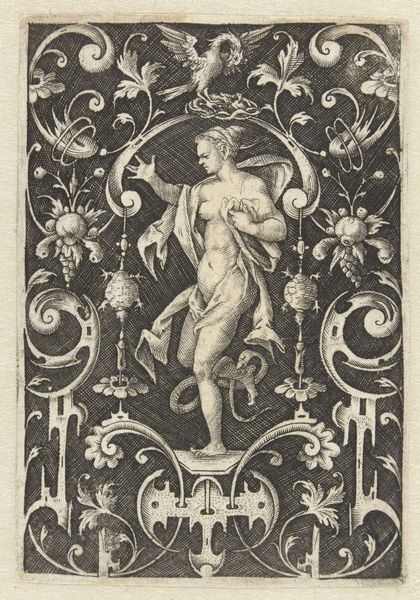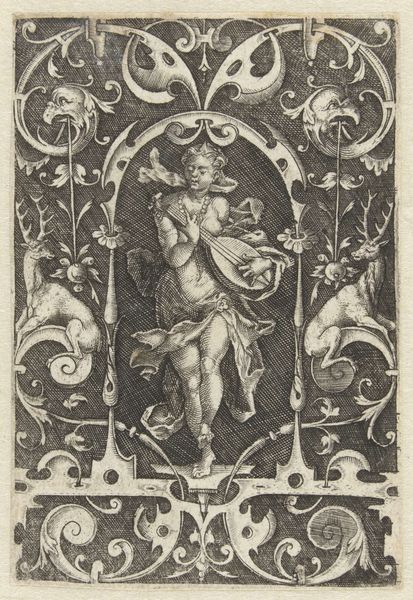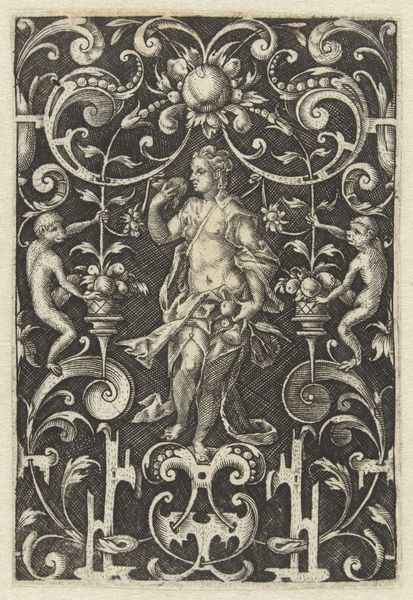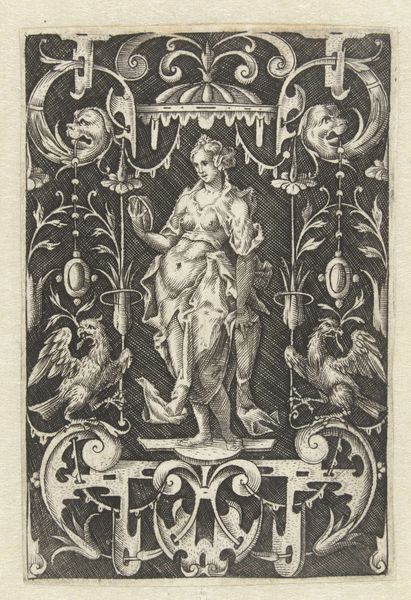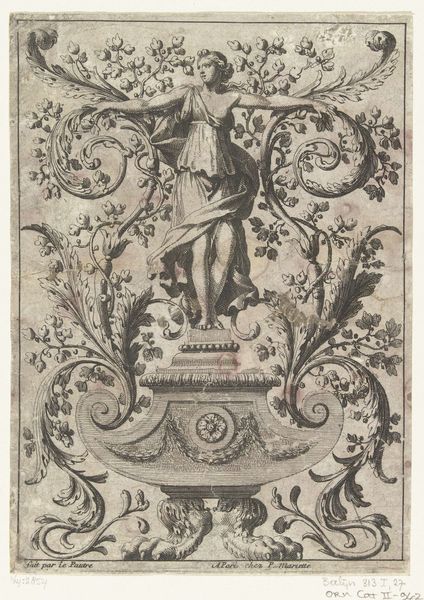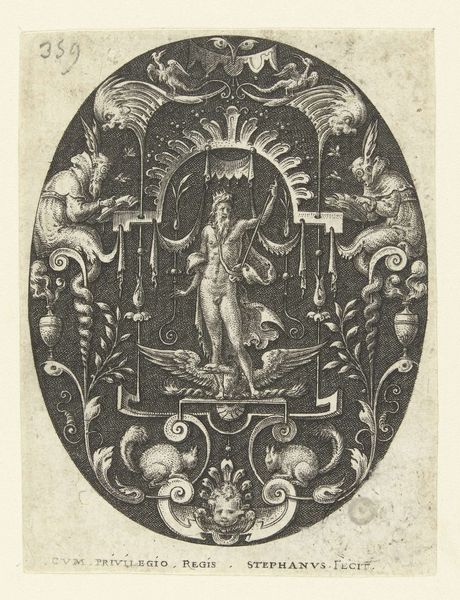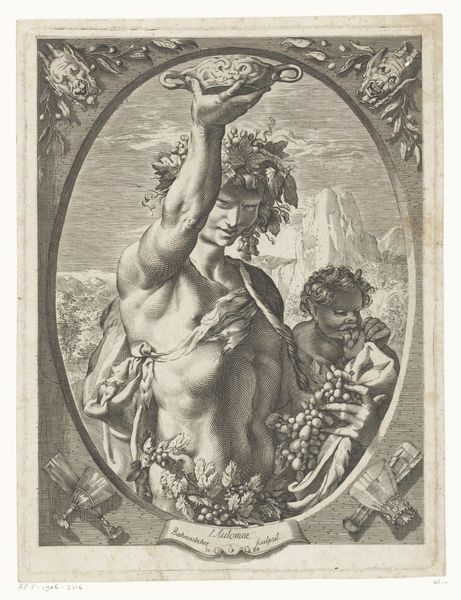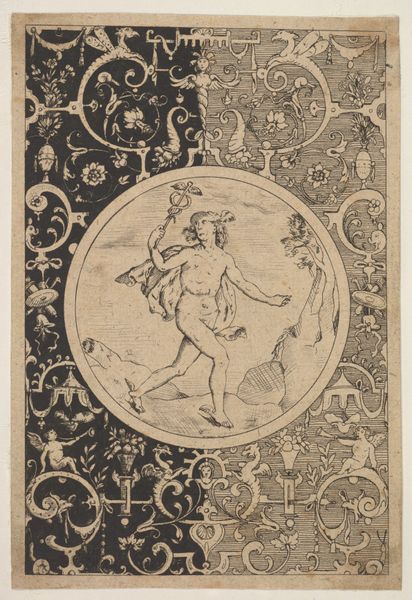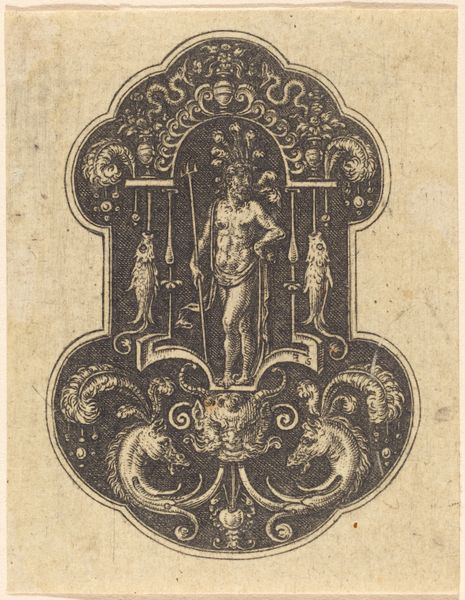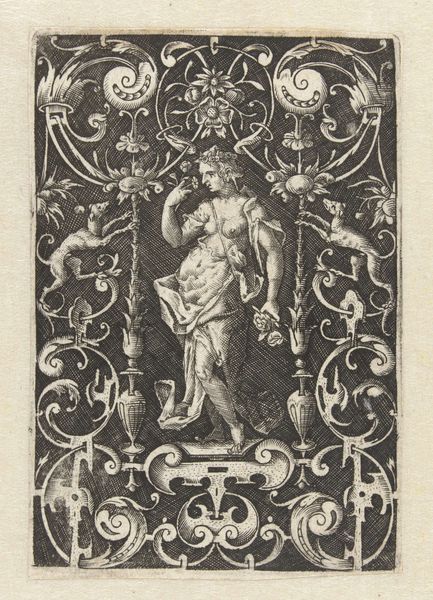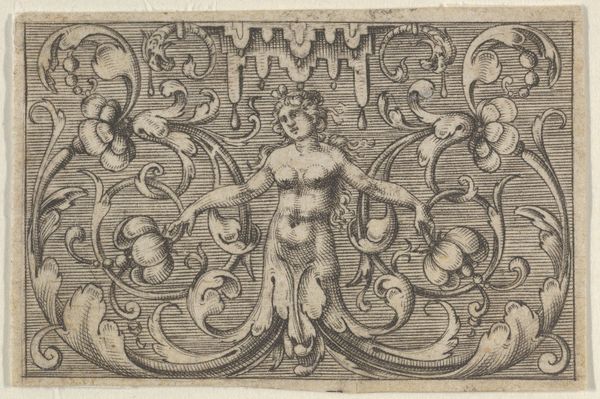
Grotesque with male figure with lower body and head of acanthus scrolls 1515 - 1600
0:00
0:00
drawing, print, engraving
#
drawing
#
allegory
# print
#
mannerism
#
figuration
#
11_renaissance
#
grotesque
#
engraving
Dimensions: Sheet (Trimmed): 8 7/16 × 5 9/16 in. (21.4 × 14.1 cm)
Copyright: Public Domain
Editor: Here we have an engraving titled "Grotesque with male figure with lower body and head of acanthus scrolls," created sometime between 1515 and 1600 by an anonymous artist. The intricate detail and strange combination of human and plant-like elements definitely give it a surreal feeling. What strikes you most about this piece? Curator: It's fascinating how these grotesque figures, born in the Renaissance, actually speak to anxieties around identity and societal norms. Notice how the male figure isn't simply *decorated* with foliage; he *becomes* it. This speaks to a fluidity of form that challenges rigid categories, not just of male and plant, but also of beauty and ugliness, natural and artificial. Editor: That's interesting, I hadn't thought of it that way. So it's more than just decoration; it's about questioning boundaries? Curator: Exactly! Consider the political context. These images emerged during a time of exploration and colonization, when Europeans were encountering radically different cultures and beings. These 'grotesques' embody this period of disruption and negotiation with the "Other." The monstrous, often racialized Other, whose features are assimilated to a human form, to a male one to be exact. Editor: So the blending of forms can also represent anxieties about those power dynamics? Curator: Precisely. The “monstrous races” discourse placed figures outside the human form in order to other and vilify. In addition to colonizing territories, these “monstrous races” were imagined in ways to legitimize such actions, resulting in narratives deeply entrenched with prejudices. Are there any aspects about this particular one you find striking in its portrayal of masculinity? Editor: Now that you mention it, the figure doesn’t seem particularly powerful. It's almost melancholic, weighed down by the foliage. Perhaps representing the burdens of constructed identities? Curator: That’s a very insightful observation. Perhaps it's a challenge to those very same standards and their inherent failures. It's this dialogue between the past and our present that keeps these images alive. Editor: This has given me a new perspective on Renaissance art. I’ll definitely look at grotesques differently now. Curator: Excellent. I’m glad to know this discussion around the history and theoretical interpretations will lead to even more conversation.
Comments
No comments
Be the first to comment and join the conversation on the ultimate creative platform.
